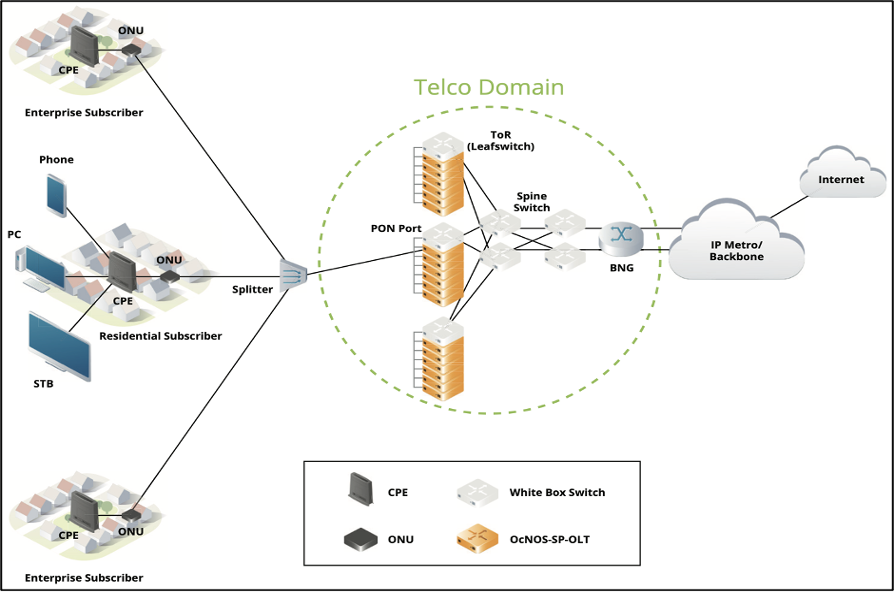
Many of us have become intimately familiar with a once unfamiliar workstyle during these unprecedented times — that of working remotely. Home is no longer just a haven to escape to after the arduous workday. It’s been transformed into an office space as well, with more than half of all workers in the United States alone currently performing their jobs from home. One significant impact of this hybrid lifestyle is the increased use of our home’s internet connection bandwidth.
Long gone are the days when we used mobile devices for simply making phone calls or listening to a handful of albums downloaded to our devices. Today, almost every form of media is streamable. The average user is just as likely to upload a video to YouTube and attend a Zoom call as they are to download an HD movie or work files to their device. And with the introduction of more and more services offering 5G, bandwidth will become ever more important to us at home while we work at our desk or just want to enjoy a movie from our couch.
IP Infusion’s OcNOS®-SP-OLT platform addresses these concerns with a modular and cost-efficient solution that ensures networks are as agile as necessary to keep up in these fast-moving times. Its latest iteration features new Optical Line Terminal (OLT) software to work seamlessly with most service providers (SP). OcNOS-SP-OLT specifically caters to disaggregated XGS-PON (Passive Optical Network) devices.
The Challenge: Over-Crowded Broadband With Limited Bandwidth
PON is the traditional method of providing broadband access to multiple end-users. It’s often referred to as last-mile connectivity between the end-user and service provider network. It uses a single optical fiber and unpowered optical splitters to provide a point-to-multipoint access network, connecting multiple customers to the service provider network over the same fiber.
Because of their straightforward design, many FTTx (fiber to the home/building/business/cabinet) service providers have universally implemented PON networks as the go-to solution for delivering basic broadband to customers. Three main components comprise these PON networks: the OLTs, Optical Network Units (ONUs), and an Optical Distribution Network (ODN). This aggregated, one-size-fits-all mentality comes with limitations that IP Infusion’s OcNOS-SP-OLT aims to address.
With more people working from their homes and as more devices move onto 5G platforms, the amount of data transfer will exponentially increase across these legacy network structures.
Legacy PON networks are commonly limited in their bandwidth to 2.5 Gbps downstream and 1.2 Gbps upstream. Because of this, people can sometimes find their services throttled back when too many users are utilizing their devices, over-crowding the PON network’s resources.
There’s also a considerable upfront expenditure when designing and building these networks, which usually involves costly, power-hungry equipment and the laborious endeavor required to redesign the system to accommodate new locations or handle additional subscribers. With more people working from their homes and as more devices move onto 5G platforms, the amount of data transfer will exponentially increase across these legacy network structures.
Implementing disaggregated distributed architecture in network solutions offers a cost-effective and scalable answer that can help networks reap the full benefit of a 5G world. That’s where the OcNOS-SP-OLT solution using XGS-PONs comes in.
The Solution: Disaggregation, XGS-PON and TiBit MicroPlug
XGS-PON is the next step in the evolution of last-mile PON network data transmission. PON, as mentioned above, is limited to asymmetric data transmission and requires careful planning around the OLT ports when setting up the network. XGS-PON, however, allows for symmetrical data transmission at a higher bandwidth than its predecessor. XGS-PON can transfer data at 10 Gbps both upstream and downstream on the same line. Users enjoy more bandwidth and are at less risk of a crowded network due to the symmetrical data transfer. As previously mentioned, IP Infusion’s OcNOS-SP-OLT has integrated XGS-PON capability into its disaggregated network solution.
Transitioning to a disaggregated network makes it easier to scale networks as it breaks the imposed structure brought about by vendor lock-in and makes the network far more modular. In the disaggregated model, different types of OLTs can be connected to the same switch without interfering with its internal logic. The virtualized OLT control panel delivers simplified life-cycle management and scalability. It also allows for more PON services to operate simultaneously on the pre-existing optic cable infrastructure of the legacy network.
Transitioning to a disaggregated network makes it easier to scale networks as it breaks the imposed structure brought about by vendor lock-in and makes the network far more modular.
Furthermore, network designers can seamlessly upgrade their network by deploying best-of-breed, whitebox OLTs & ONUs and migrating to the latest PON technologies without redesigning the entire system around a single proprietary piece of hardware. This, coupled with the OcNOS-SP-OLT’s support for TiBit MicroPlug OLT allows any traditional switch to have OLT capabilities, ensuring that all users can work from a faster and more flexible network at a lower cost-per-bit rate than ever before.
The TiBit MicroPlug OLT is a SFP+-based pluggable OLT solution that can be inserted into an ethernet interface of a switch, converting it into an OLT-aware network element. It also allows for increasing the density that the network can withstand. The modular technology can be inserted by designers into the pre-existing Ethernet ports, permitting direct splicing of standard routers, ethernet switches, and other hardware into the existing PON (or XGS – PON) network. Doing so allows subscribers to increase the flexibility of their disaggregated network at an even lower upfront cost since they do not require specific architecture. It also avoids vendor lock-in by removing the need to purchase more dedicated OLT equipment.
With its support of these technologies, OcNOS-SP-OLT can transform subscribers’ broadband use into a system that is scalable, cost-efficient and easy to deploy at a greater magnitude than ever before. Alas, working from home just got easier.
Please contact IP Infusion to learn more about OcNOS-SP-OLT. The Application Note can be downloaded here.

